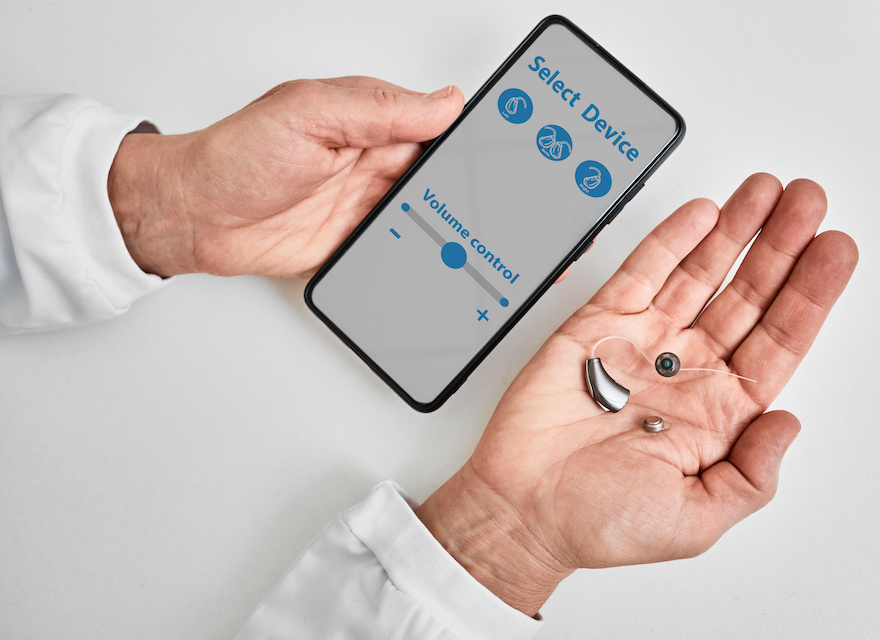Translating hearing aid technology
Like a puppeteer tilting the strings, the rat under the chef’s hat, or an angel on the shoulder, hearing aids are the backbone of the plot by helping the patient maintain their main character role. That’s why staying current on these discrete devices has never been more critical – especially with 2023’s technology turnover allowing them to hide in plain sight.

By understanding the latest technical advancements in the hearing aid industry, professionals can better assist and educate patients on what is the best fit for them by knowing what is available. So if you are only freshly aware of what makes a smart device ‘smart’ – look no further to find out who the new kids on the block are.
Customized and personalized treatment
Modern hearing aids don’t just mould to the patient’s ear – they mould to the person’s hearing health baseline. For a refresher, hearing aids process sound by receiving the sound and breaking it down into bands called channels to digitize it before amplification.
Today’s devices take that process one step further and individualize treatment by only amplifying the frequencies that the patient needs to be enhanced. Consider a patient who only struggled with one type of frequency – the device could single out that band and enhance only its output to customize the user’s experience. For reference, the prior model would only be able to amplify both types of frequency (mid and high) regardless of what the wearer required.
Connected and projected abilities
When treating hearing loss, it’s all about re-establishing contact from the real world to the patient’s world. Today’s hearing aid technology takes that directive literally and now offers Bluetooth and smartphone connectivity directly between the devices.
This advancement follows from the digitization of hearing aids, which allows for better control of sound and background noise levels. By creating a cleaner output, the feature provides a more natural listening experience that lets the user stream music straight to their ears and/or control sound levels, all from an app on their smartphone. When the treatment’s success hinges on the seamlessness of the individual’s immersion into society, the connection of today’s hearing aids doubles down on keeping up with the crowd.
Enhanced and advanced auditory experiences
In true 2023 technology fashion, hearing aids are no longer just about getting by – they can also provide an experience. While it’s still a relatively new concept, some hearing aid companies are now manufacturing their products to offer augmented reality features. This engineering simulates real-world sounds, creating an immersive listening environment through directional microphones and/or ambient sound. These aspects are becoming more common in regular wireless headphones, but their actual value is felt by those with mild to moderate hearing loss as it enormously improves how they interact with their environment. Overall, the option offers a better acoustic understanding of the environment and helps make the transition to wearing hearing aids more enjoyable for the patient.
Keep an ear to the ground
When no amount of hearing loss can mute the stigma around hearing aids, and no amount of denial can undo the brain implications that untreated hearing loss induces, hearing practitioners can make a difference by gaining industry awareness and educating patients.
Hearing aids can be in anyone’s future, so keeping current on the present is the best way to keep your patients in good standing. That being said, staying up to date is a challenging feat, so that’s why we’re here. To boil the 411 down to the TL;DR – if the metaphorical teleprompter goes dark, remind your patients that today’s hearing aids say “the show must go on” – no understudy required.
AHIP is not and shall not be liable for any of the views expressed by the authors or advertisers on the Signal Blogs. The authors’ opinions and the advertisers’ content do not necessarily reflect AHIP’s views.



